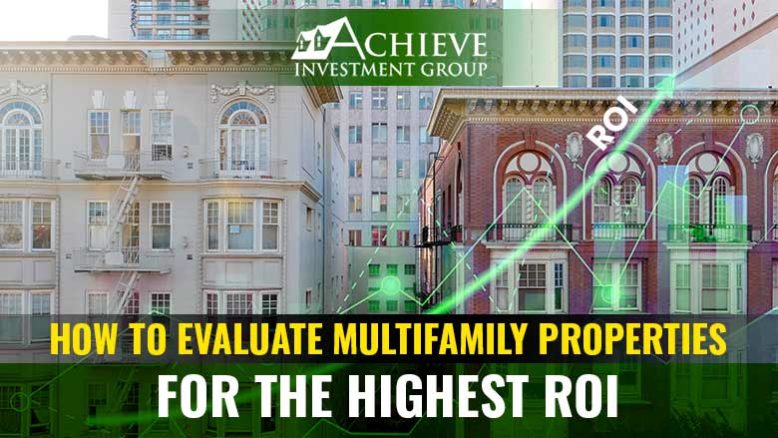Maximizing ROI in Real Estate: A Guide for Investors
When you purchase a property as an investment, one of the most important metrics is the Return on Investment (ROI). The ROI tells you how much profit you’re making on a property. What is ROI? Return on investment is the money that is made through real estate investments. It is a measure of how much money has been earned compared to the amount of money invested. If a property earns more than its cost, you have an investment that provides a positive return. Conversely, if it costs more to own than what you earn, you have negative returns or losses. Factors that can affect ROI in real estate include property condition, location, market conditions, financing options, and property management. Therefore, real estate investors should consider all these factors when evaluating potential investments and aim to maximize ROI through careful research, strategic buying, and long-term holding. How to Calculate ROI in Real Estate? Return on Investment (ROI) is a measure of the profitability of an investment. For example, in real estate, the ROI is often used to calculate the profitability of property investment. To calculate the ROI on a real estate investment, you need to determine the property’s net operating income (NOI) and the total investment costs. Net Operating Income (NOI): NOI is the property’s income from rent and other sources minus operating expenses such as property taxes, insurance, and property management fees. NOI = Gross Income – Operating Expenses Total Investment Costs: Total investment costs include the purchase price of the property, closing costs, repairs and renovations, and any other costs associated with the acquisition of the property. Return on Investment (ROI): Once you have determined the NOI and total investment costs, you can calculate the ROI using the following formula: ROI = (NOI / Total Investment Costs) x 100 For example, if a property has an NOI of $50,000 and total investment costs of $250,000, the ROI would be 20% (50,000 / 250,000 x 100). Related: Cap Rates vs. IRR in Commercial Real Estate Investments How to Find Your Return on Investment (ROI) Finding your return on investment (ROI) in real estate can be more complex than other investments. However, here are the steps you can take to calculate your ROI on a real estate investment: Determine the property’s net operating income (NOI): NOI is the property’s income from rent and other sources minus operating expenses such as property taxes, insurance, and property management fees. To determine the NOI, you’ll need to know the property’s gross income, which includes all rent and other income, and its operating expenses, which include property taxes, insurance, and property management fees. Calculate the total investment costs: Total investment costs include the purchase price of the property, closing costs, repairs and renovations, and any other costs associated with the acquisition of the property. Make sure to include all costs, including financing costs, such as interest and closing costs. Calculate the ROI: Once you have determined the NOI and total investment costs, you can calculate the ROI using the following formula: ROI = (NOI / Total Investment Costs) x 100 Take into account the holding period: ROI is a metric used for short-term investments; for long-term investments, the internal rate of return (IRR) is a more appropriate metric. IRR accounts for the time value of money and cash flow over the holding period. Analyze the cash flow: Cash flow is the money left after paying all the property expenses. A positive cash flow means that the property generates more income than expenses, while a negative cash flow means that the property generates less income than expenses. Consider the appreciation potential of the property: Appreciation is the increase in the value of a property over time. Appreciation can be caused by factors such as improvements to the property, changes in the local real estate market, and inflation. Consult with a professional: It’s important to consult with a real estate attorney or accountant to ensure that you know all the legal and tax implications of investing in a property. They can also help you to calculate the ROI, IRR, and other relevant metrics for your specific investment. Various Methods for Calculating ROI in Real Estate There are different ways to calculate ROI in real estates, such as the Capitalization Rate (Cap Rate), Cash on Cash Return, Internal Rate of Return (IRR), Gross Rent Multiplier (GRM), Price-to-Rent Ratio, and Appreciation. Each method provides a different perspective on the performance of the investment and can be used depending on the type of investment and the investment goals. Capitalization Rate (Cap Rate): This is calculated by dividing the net operating income (NOI) by the property’s purchase price or current market value. A higher cap rate indicates a higher return on investment. Cash on Cash Return: This is calculated by dividing the annual cash flow generated by the property by the amount of cash invested. This metric is useful for evaluating the performance of rental properties. Internal Rate of Return (IRR): This is a more complex metric that considers the cash flow, the time value of money, and the investment’s holding period. IRR is often used to evaluate the profitability of multiple-year investments. Gross Rent Multiplier (GRM): This is calculated by dividing the property’s purchase price or current market value by the gross annual rental income. A lower GRM indicates a higher return on investment. Price-to-Rent Ratio: This compares the purchase price of a property to the annual rental income it would generate. A lower ratio indicates a better return on investment. Appreciation: This is the increase in the value of a property over time. It can be calculated by comparing the purchase price to the current market value or future expected value. Final Thought The ROI in real estate varies widely depending on the market and the property, but you can find a general benchmark by looking at investment property averages across the nation. By doing research in your area, you can determine if the numbers make sense for … Read more


